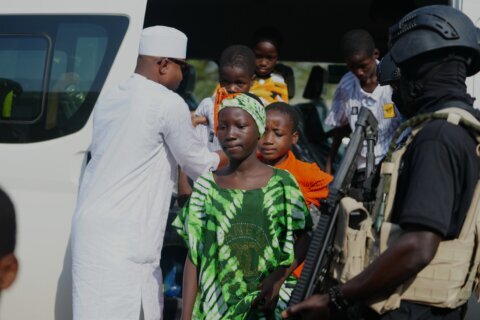The number of students enrolling in community colleges nationwide, including in the D.C. region, continues to decline, and it is leaving these institutions struggling to boost student numbers.
According to the National Student Clearinghouse, which monitors college enrollment numbers, community colleges are down 827,000 students since spring 2020. That is the biggest decrease among higher education institutions for that time frame.
“We’re certainly not immune to the national trends that you see going on at community colleges everywhere,” Sharon Morrissey, senior vice chancellor for Academic and Workforce programs for the Virginia Community College System.
According to the VCCS, since fall 2019, enrollment numbers have been down almost 9% at the state’s public two-year colleges. In Maryland, the Maryland Community College Association reports an almost 14% drop in the number of students enrolling at the state’s community colleges for that same period.
“The loss is significant because we really have tremendous shortages in a lot of health fields,” said Brad Phillips, executive director for the Maryland Association of Community Colleges.
Several schools provided WTOP with their enrollment numbers, and it shows that the big decline is being felt in the region. From fall 2019 to fall 2021, Prince George’s Community College has seen a 33% drop in new students; Montgomery College is down almost 19%; and Northern Virginia Community College lost 4% during that same period.
COVID-19’s role
After the Great Recession in 2007 and 2008, community colleges, among other higher education institutions, saw a meteoric rise in enrollment, as students looked to prepare themselves for new professions in order to compete in a job market where positions were scarce.
Fast forward more than a decade, the pandemic had a different impact, resulting in a steeper decline in the number of students attending community colleges.
Clay Railey, executive vice president and provost of Teaching, Learning and Student Success at Prince George’s Community College, said that while numbers were already declining before COVID-19, things got much worse after the pandemic began.
“It became more dramatic once we had to shut down face-to-face instruction and go fully online,” Railey said. “A lot of students had never taken online classes before. And so this was not their world.”
While some students quickly adapted to learning online, that wasn’t true for everybody, as internet speed and limited tech skills frustrated many who tried to start or continue their education.
“A lot of our students attempted to go online, and they were very unsuccessful,” Morrissey said.
The pandemic doesn’t get all the blame
Phillips believes rising child care costs are also playing a role; the state sees a drop in the number of female students surpass a drop seen with male students.
“So, I think in a lot of ways they just decided perhaps, ‘Is now a time?’ They don’t see career advancement, that they decided to maybe stay home with their kids instead of having to pay for day care,” Phillips said.
Jermaine F. Williams, president of Montgomery College, said the school sent out questionnaires to students to see why some are choosing not to return to class, and the top responses were the need to work more to afford school and difficulty juggling classes around employment.
“From what we’ve seen, it’s not a lack of desire,” Williams said.
One big difference coming out of the pandemic, compared to coming out of the recession, is the fact there are many jobs available, but not enough people to fill them.
“When there’s an abundance of jobs, people tend to go to work and they don’t come to school,” said Michelle Brown-Nevers, vice president for Enrollment Management and Student Success at Northern Virginia Community College.
Morrissey pointed out one other major demographic reality that colleges are seeing: declining birthrates, which means fewer 18- to 24-year-olds who are traditionally the ones who enroll in colleges. That, Morrissey said, has led to more competition between community colleges and four-year universities.
“Universities are competing with us, you know, they’re enrolling a lot more students who would have previously ended up going to a community college,” Morrissey said.
Coming up, WTOP will explore how area community colleges are adjusting their approaches in the hopes of attracting more students.








